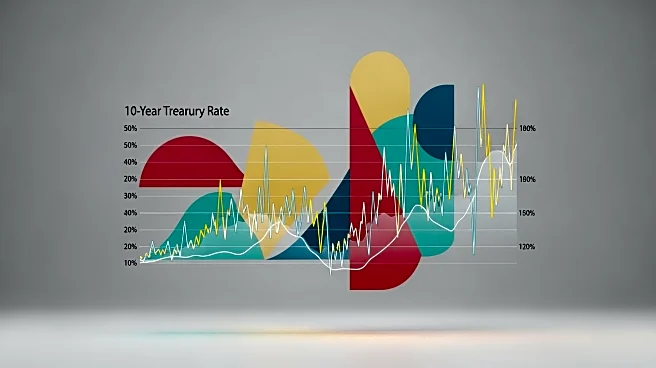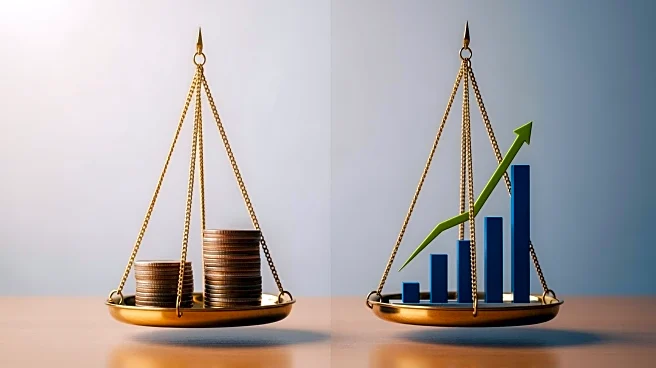What's Happening?
Treasury yields represent the interest rates the U.S. government pays to borrow money, influenced by supply and demand dynamics. Treasuries are considered low-risk investments due to their backing by the U.S. government.
The yield reflects the cost of borrowing and influences interest rates for consumers and businesses. Treasury yields are inversely related to Treasury prices, with longer-term securities typically offering higher yields. The yield curve can invert, signaling potential economic downturns. Treasury yields are a key indicator of investor confidence and economic prospects.
Why It's Important?
Treasury yields are crucial for understanding government borrowing costs and economic conditions. They influence interest rates across the economy, affecting consumer and business loans. The yield curve's shape can signal investor expectations about economic growth and inflation. Changes in Treasury yields can impact fiscal policy decisions and investor confidence in U.S. debt securities. The ability to manage Treasury yields is important for maintaining economic stability and ensuring fiscal sustainability.
What's Next?
Policymakers may need to consider strategies to manage the impact of Treasury yields on borrowing costs and economic growth. Efforts to stabilize interest rates and address fiscal sustainability will be important for maintaining confidence in U.S. debt securities. The potential for changes in monetary policy and economic conditions will be closely monitored by investors and financial institutions.
Beyond the Headlines
The ethical and legal dimensions of fiscal policy decisions may become more prominent as stakeholders consider the implications of rising debt levels. Long-term shifts in investor behavior and global perceptions of U.S. economic stability could influence the role of the dollar as a reserve currency. The balance between fiscal responsibility and economic growth will be a key consideration for policymakers and financial markets.












